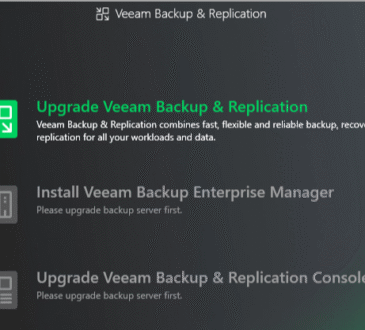Windows Server 2022 LTSC 21H2 Build 20348.3932 (2025.07) x64

Windows Server 2022 is the latest generation of Windows operating system for servers, released in September 2019 and replacing Windows Server 2019 and Windows Server 2016. Similar to Windows Server 2019, this version of the Windows Server 2022 operating system shares a common core with Windows 10 and, contrary to expectations, is not designed based on Windows 11. This operating system was released in the LTSC channel and, in addition to minor appearance changes, it has many bug fixes, reported bugs, and new features, especially in the area of security. Also, due to the lack of acceptance of Windows Server SAC , its development has been stopped and Windows Server Core has replaced it; stay tuned.
Key features of Windows Server 2022:
- New Azure Edition optimized for Microsoft Azure
- Various security improvements such as Secured-core server
- Enabling HTTPS and TLS 1.3 by default
- Secure DNS support via DNS-over-HTTPS
- AES-256 encryption and East-West SMB protocol
- Connecting to SMB compliant with the new QUIC protocol
- Azure Arc enabled by default
- Azure automated management with Hotpatch
- Platform and containerization improvements with Kubernetes
- Nested virtualization for AMD processors
- Location of the new Microsoft Edge browser
- New Data Migration Services
- Storage Spaces services with Storage bus cache for standalone servers
The new version of Windows Server 2022 is based on Windows Server 2019 and is a high-level update for this version. In this version, special attention has been paid to cloud capabilities, especially Azure, so that in addition to the Standard and Datacenter editions, we also see an Azure Edition that is fully optimized for this cloud environment. One of the new features in this area is called Azure Arc, which enables you to control multi-cloud environments from a single management dashboard. You can easily launch various Microsoft Azure services such as Azure Policy, Azure Defender, and Azure Monitor on your server.
The new version of the Windows Server operating system also has many improvements in the field of creating and managing
Hyper-V virtual servers , including a new Action Bar, instant migration to cloud storage, Affinity and anti-Affinity rules, machine cloning, workload distribution across different servers, and increased security at the hardware level, etc. Another new feature of Windows Server 2022 is various improvements in the field of containerization, which is widely used in the modern world, which reduces implementation costs and accelerates related processes; reducing dependencies between the host system and applications inside the container has been one of the most important goals in this area. Also, increasing the download speed and efficiency of these
software is another capability of container compression. The Windows Admin Center has been completely revamped in this release, allowing you to host .NET applications on Azure Container Registry and Azure Kubernetes Service.
Network administrators can also run containerized applications without a domain connection using gMSA, a popular user request. The panel also includes many monitoring updates and real-time access to server performance information. Windows Server 2022 introduces Secured-Core technology, which implements multi-layered security capabilities at the operating system and hardware levels. All of these capabilities are enabled by TPM 2.0 and System Guard, which minimizes the risk of firmware-level threats. Increased collaboration between Microsoft and OEMs to produce hardware-compatible software has not only increased application speed, but also provided a high level of security. Windows Server 2022 supports NetApp migration. NetApp arrays are used to secure and optimize storage in NAS and SAN environments for data analytics and backup. In Windows Server 2022, you can migrate these arrays to Windows Server and integrate them with Clusters. DFSN migration is also a new feature in the new version. New SMB capabilities are also an integral part of every version of the Windows Server operating system. In Windows Server 2022, the SMB protocol supports AES-256 encryption, and TLS 1.3 is enabled by default across the entire operating system. One of the most innovative features of Windows Server 2022 is the implementation of security features for mining crypto. The cryptocurrency industry is facing a variety of ransomware attacks, the most important of which is called Eternal Blue Exploit. In this version of Windows, it is completely safe from such attacks with support for virtualized security or VBS and HVCI.
Microsoft Edge browser , which is developed based on the Chromium engine, is included by default in this operating system, which is installed in the Desktop Experience edition with Windows. Microsoft is scheduled to completely retire
the Internet Explorer browser in its future plans.
Notes about Windows Server 2022:
– This is the final version [RTM MSDN] of the official and original Windows Server 2022.- This version is the latest version released with version number 21H2 and build number 20348.3932, which was released by Microsoft on July 2025, corresponding to 24 Tihr 1404.
Windows Server 2022 Editions:
– Windows Server 2022 Standard
– Windows Server 2022 Standard (Desktop Experience)
– Windows Server 2022 Datacenter
– Windows Server 2022 Datacenter (Desktop Experience)
Windows Server 2022 LTSC 21H2 Build 20348.3932 Retail MSDN Untouched (2025.07)
Official Microsoft version, untouched and without any changes and manual activation
64-bit version – 5610 MB
Windows Server 2022 LTSC 21H2 Build 20348.3807 VL MSDN Untouched (2025.06)
Official Microsoft version, untouched and without any changes and manual activation
64-bit version – 5610 MB
System Requirement
Processor:
– 1.4 GHz 64-bit processor
– Compatible with x64 instruction set
– Supports NX and DEP
– Supports CMPXCHG16b, LAHF/SAHF, and PrefetchW
– Supports Second Level Address Translation (EPT or NPT)
Memory:
– 512 MB (2 GB for Server with Desktop Experience installation option)
– ECC (Error Correcting Code) type or similar technology
Disk space:
– 32 GB free space
– Compliant with the PCI Express architecture specification
– Persistent storage devices on servers classified as hard disk drives must not be PATA
– Windows Server 2019 does not allow ATA/PATA/IDE/EIDE for boot, page, or data drives
Network adapter:
– An Ethernet adapter capable of at least gigabit throughput
– Compliant with the PCI Express architecture specification
– Supports Pre-boot Execution Environment (PXE)
Other requirements:
– DVD drive (if you intend to install the operating system from DVD media)
– UEFI 2.3.1c-based system and firmware that supports secure boot
– Trusted Platform Module
– Graphics device and monitor capable of Super VGA (1024 x 768) or higher-resolution
– Keyboard and Microsoft® mouse (or other compatible pointing device)
– Internet access (fees may apply).
Installation Guide
1. First, enter the download link of all sections in the download management software and download.
2. Unzip the downloaded files using WinRAR.
3. Burn the ISO file in the ISO folder to a USB Flash using the Rufus program or burn it to a raw DVD9 using the ISO Burner program and then install Windows.
4. Burn the Image file to a raw DVD using the ISO Burner program or burn Windows to a USB Flash using the Rufus program and then install Windows.
5. After the Windows installation is complete, to activate manually, simply enter the Activation folder, right-click on the KMS_VL_ALL_AIO.cmd file and run it as Run as Administrator, and then click the second option in the window that opens, Install Activation Auto-Renewal.
Notes:
– The MSDN Untouched version released by Microsoft is without any changes (even the file name) and the Hash of the files is in accordance with Microsoft.
– Be sure to use a download manager software to download.
– All files are compressed as much as possible and can be repaired with WinRAR if the download is incomplete.
Note: The Datacenter edition is the most complete edition of Windows Server 2022.
If you are asked to enter a Product Code during installation, skip it.
- Design


